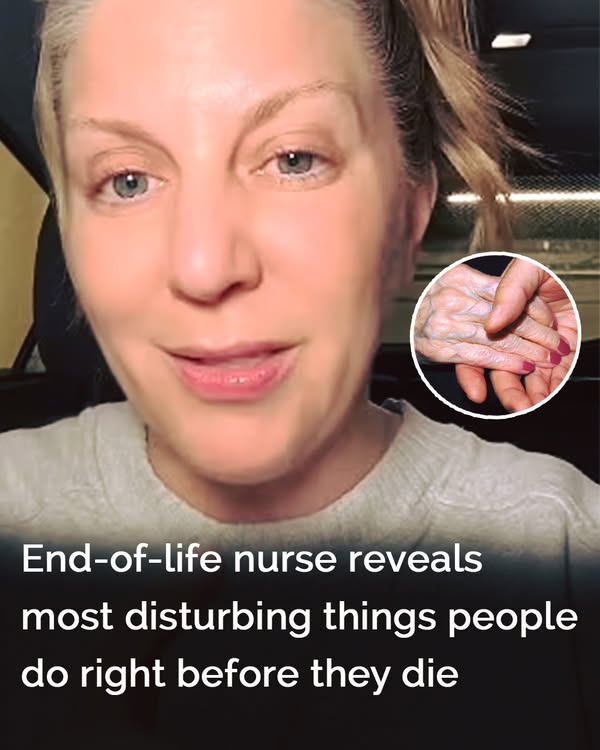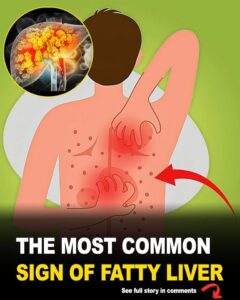As we all inevitably face death, it remains one of our greatest fears, wrapped in mystery and uncertainty. However, understanding what happens in the final moments can alleviate some of the anxiety surrounding the dying process. A hospice nurse, Julie McFadden, has shared her expertise to help families navigate this difficult time, shedding light on the unsettling yet natural things people experience before they pass.
Hospice Nurse Shares Insight on Dying Process
Julie McFadden, a hospice nurse with over 15 years of experience in intensive care and hospice, has dedicated her career to helping families understand the end-of-life process. Through social media, videos, and her book, McFadden advocates for educating the public about death, aiming to reduce the stigma and fear surrounding it.
She explains that many families are shocked when they witness certain changes in their loved ones as death approaches. These can include changes in breathing patterns and what is known as the “death rattle.” While these signs can be disturbing, McFadden assures that they are a normal part of the dying process.
Changes in Breathing: Cheyne-Stokes Breathing
One of the most common and alarming signs families witness is a noticeable change in their loved one’s breathing. McFadden describes a pattern called Cheyne-Stokes breathing, which involves rapid breathing followed by long pauses, repeating in cycles. This pattern can last anywhere from 30 seconds to two minutes.
While it may appear distressing to onlookers, McFadden reassures families that this irregular breathing is not a sign of suffering. Cheyne-Stokes breathing occurs when the brain struggles to detect carbon dioxide levels as the body shuts down. The patient, in most cases, remains unconscious, and their body shows signs of relaxation, not distress.
McFadden stresses that despite how alarming the breathing pattern may look, the patient is not experiencing any pain or discomfort. This is part of the natural process the body goes through when approaching the end of life.
The “Death Rattle”: What It Really Is
Another common but unsettling symptom that McFadden highlights is the “death rattle,” a gurgling noise that can be heard when a person is nearing death. This noise often occurs when the body stops sending signals to swallow saliva, causing it to build up in the mouth and throat.
As air moves through this saliva, it creates the rattling sound. Many people mistakenly believe this sound is coming from the lungs, but McFadden clarifies that it is simply saliva in the mouth. While the noise can be distressing for loved ones, McFadden reassures that it is entirely normal and not painful for the person who is dying.
 Shutterstock
Shutterstock
Understanding the Dying Process: Why It’s Important
McFadden’s mission is clear: to help families understand the natural process of dying, so they are better prepared and can experience less anxiety when the time comes. She explains that the body instinctively knows how to die and, in most cases, no discomfort is experienced by the patient. If there is any sign of discomfort, medications can be used to keep the person calm and comfortable.
It is important for families to recognize that these signs, though unsettling, are natural and do not signal pain or suffering. Knowing what to expect can ease the emotional burden and allow families to say their final goodbyes with more peace of mind.
The Physical Changes That Occur After Death
McFadden also explains that shortly after death, the body begins to break down, leading to some noticeable changes. Research shows that a distinctive odor often accompanies this process. The breath, skin, and bodily fluids may emit a smell similar to nail polish remover due to the release of a toxic compound called putrescine.
Putrescine is associated with decomposition, and the brain can detect this odor at a subconscious level. This reaction is linked to the recognition of death and the body’s natural process of breakdown. Though it can be unsettling, it is a normal part of the body’s journey after life.
Final Thoughts on the Dying Process
Julie McFadden’s insights into the dying process aim to offer comfort and understanding for those navigating the difficult reality of saying goodbye. Through her work, she helps remove the fear surrounding death, teaching families that, while the process may seem disturbing, it is natural and often pain-free.
By talking openly about the final moments of life, McFadden provides invaluable knowledge that can help families feel more prepared and less fearful. This transparency about death offers the chance for families to approach the end of life with dignity, understanding, and peace of mind.
Learn More About End-of-Life Care
For those seeking to learn more about how to navigate the challenges of end-of-life care, here are some helpful articles:
- Pope Francis’ Heartbreaking Final Gesture to His Nurse Before Death
- 20 Early Signs Your Body May Be Fighting Cancer: Understanding the Signals for Better Health
By understanding the natural progression of life and death, families can find peace in knowing they’re not alone in their experiences.




